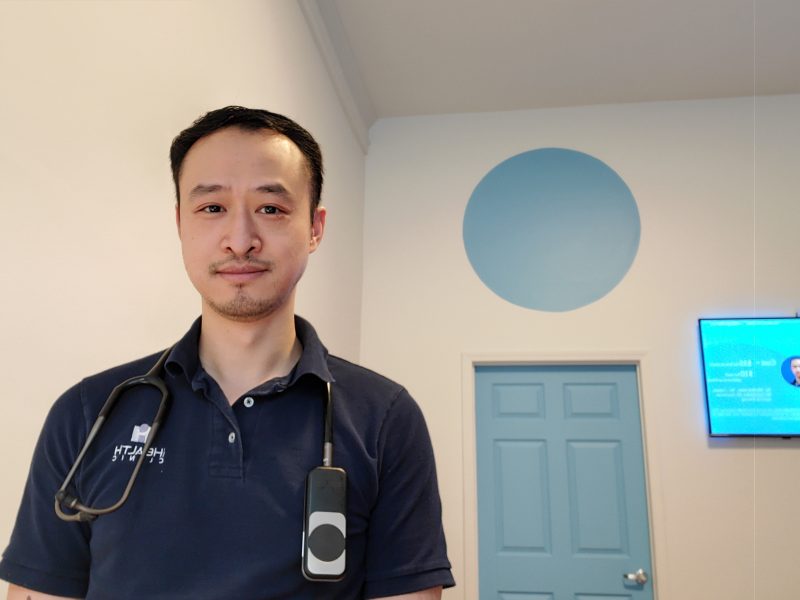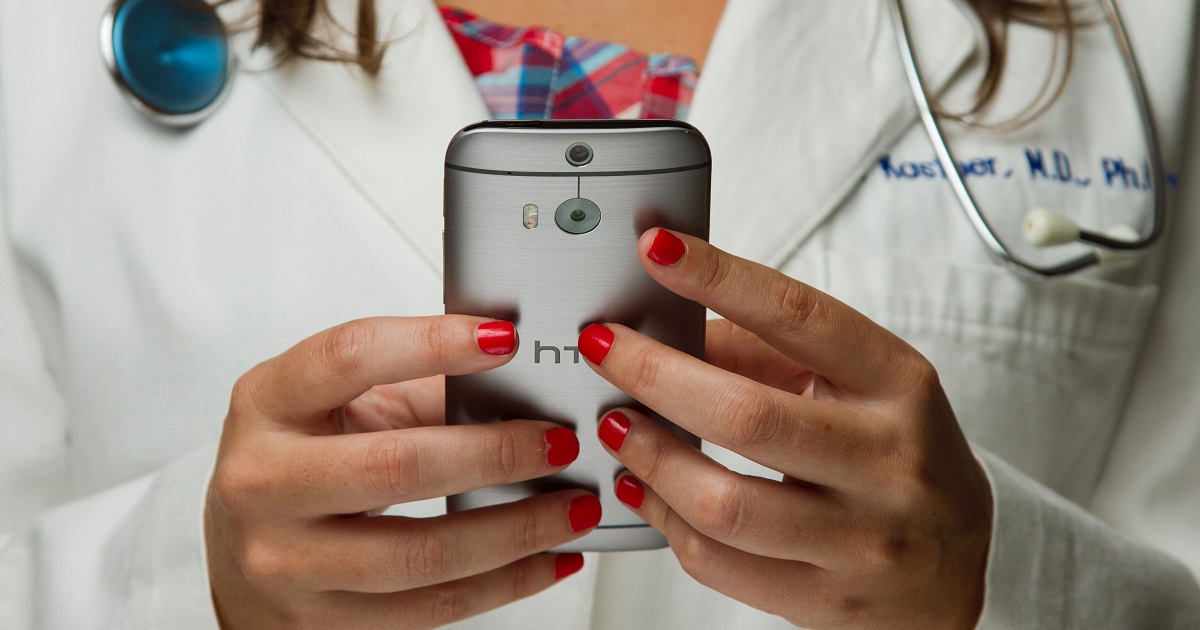A Healthy Disruption
Access to health care is a global problem. Primarily, the stumbling block to much-needed care is the cost. Practices like the iHealth Clinic are changing the game and making sure their patients get what they need. Reyana Nacerodien writes. This article first appeared in issue 6 of In Focus magazine.
Here’s the lowdown on Dr Timothy Wong who started iHealth Clinic in Pittsburgh, Pennsylvania, in 2019. A board-certified family medicine physician, Dr Timothy specialises in primary care and utilising technology to improve patient health. He previously worked in Indiana as a family physician and director of quality in a group of 77 providers. His medical care incorporates the biopsychosocial model into everyday practice. His clinical interests include integrating technology and medicine, chronic care, and patient education.
Known to his patients to be friendly and caring, and something of a god sent for those without health insurance, Dr Timothy has been a pioneer in a new way of delivering care called Direct Access Primary Care, which emphasises access to medical care at low cost. In fact, some thinks of his healthcare system as disruptive. Regardless, iHealth Clinic has grown steadily and is a proof of concept for an exciting model of care.
The clinic started with zero patients and in eight months have seen 1,700 unique individuals. Most visits are for acute issues. ‘Many patients have come back again for new concerns or for chronic issues,’ says Dr Timothy. ‘I joked with a friend that we had 1,700 times growth since opening. To put that number in perspective, most direct primary care practices would limit their patient population to less than 800 and most traditional American primary care providers are estimated, in different studies, to have patient populations anywhere from 900 to 2,500 on average.’

Born and raised in Toronto, Canada, Dr Timothy tends to dabble in the latest gadgets, aquascaping, reading comics and spend time with his pet Chinchillas as well as his wife, when not seeing to patients. Also, he takes a few moments to answer some questions below.
Where did the idea for iHealth originate?
The inspiration for the iHealth Clinic model, which I’ve called Direct Access Primary Care, comes from many places when I think about it. I am Canadian and my wife is Filipino, so I have some experience on how healthcare can be different outside of the United States.
I was fascinated by the micropractice model in medical school where the doctor is the only employee. The iHealth Clinic model is similar to direct primary care in the United States, where doctors don’t take insurance but charge monthly membership fees. iHealth Clinic doesn’t need to charge membership. Instead, it charges patients per visit as it merges direct primary care and cost-savings of a micropractice model. By utilising technology and understanding workflow, the model is quite functional and financially sustainable.
How did the move to your own practice using this model unfold?
I’ve been practicing for six years now, after three years of family medicine residency. I worked in a traditional setting as an employed physician for a small, rural hospital outside of Pittsburgh. I was constantly getting burnt out and losing sight of why I went into medicine. I think the major cause of this was working in an inefficient and sometimes absurd system. Being a physician in the United States is difficult due to the unnecessary complexity and inefficiencies that get in the way of patient care. I realised that I was a small part of the problem because I was part of a failing system and decided to change the model of care I was providing. It was a difficult transition as I had many friends at my previous position and a stable salary. Luckily, my wife is very supportive and it was a great decision to pivot to this new model.
Some media coverage calls iHealth disruptive. What are your aims with this model of practice?
Since insurances are so ingrained in the American healthcare system, some would say that this model is disruptive. I think the model can be disruptive because it has the potential to change the present healthcare system in the US. By not working with insurances, the direct access primary care model is much more efficient and able to focus on patient care. I believe the model works because we can provide efficient, valued primary care to people who normally cannot get help due to cost or even convenience issues. The overall aim would be to show that this model works both financially and logistically, and have it replicated and improved upon by other healthcare providers across the country. I purposely didn’t get any grants, donations or outside funding to prove that this model can work and can be replicated by others who want to try it.
Can you describe your average day?
We’ve now been open for about eight months and we see more patients daily each month. After media coverage, there’s a pickup in patients and my busiest day involved seeing over 30 patients. Slow days recently are still about 17 patients. My hours are quite long because I want the clinic to grow quickly. I start at 8am on weekdays and see the last patient at 6:30pm. I also work on Saturday from 9am to about 3:30pm. When I’m not seeing patients, I’m answering phone calls and emails or cleaning the office and ordering supplies. If I have time, I work on our telemedicine app that will be released soon and work on the clinic website. There’s still a lot to do, even if it’s a slow day.
How do you manage being the sole employee of iHealth?
One principle behind direct access primary care is to be low cost. Hiring more staff is very expensive and patients would ultimately have to pay for the increased cost. Since I don’t bill insurances, I don’t need much staff. I’ve a digital self-check-in system, so I don’t need a receptionist or medical assistant. Using technology efficiently, I can see a patient, create their chart, document most of the visit, get a history, perform a physical exam, get payment and discuss follow up instructions in about 15 minutes.
Any examples of cases where you felt you made a major difference?
I see many patients, for example, for depression and anxiety who don’t have insurance. They haven’t seen a physician for these issues due to the cost – each visit can be USD150 or more. My price of USD35 for most visits makes healthcare more accessible. I think it’s awful that Americans are foregoing basic mental health treatment that affects their daily quality of life because our healthcare system is so expensive and inefficient. Many of these patients are hard-working individuals, some with multiple jobs, who don’t think that getting help is worth the cost in the traditional setting. I’ve also seen many diabetics who also forgo care due to the expense. I had one patient with a blood glucose level of over 600 in the office. If I hadn’t started him on medication, he’d have been in the Intensive Care Unit in a hospital in a few weeks with over USD10,000 in medical bills. I found some affordable medication for him and I last heard his sugars were now in the 200’s – not perfect but still a large improvement.
What’s next for you?
To roll out the model, I think I need to educate other physicians that this model of direct access primary care works well for patients and physicians. Later, I can assist others in adopting the model. I suspect it’ll be more of a grassroots movement, much like how direct primary care was when it first started. Eventually with enough traction, I can help others decrease barriers to entering this model by providing technological solutions and training solutions to help. I think it’ll take years for the model to spread as medicine changes slowly and it can be daunting to try something novel. I’ll say that so far, I don’t think I’ll ever go back to a traditional medical setting if I’ve a choice. Patients have appreciated the model. One patient this week exclaimed, ‘This is the best thing ever.’
Do you see the model as able to be replicated and sustained in other locations?
Yes, the overall goal would be to have this model replicated, sustained and improved upon by others. I really believe in the value of the model. I think some locations in the US may be able to charge less than USD35 and some places may need to charge more. The principle would still be to provide low-cost, accessible and valuable care.
Main photo by National Cancer Institute on Unsplash





